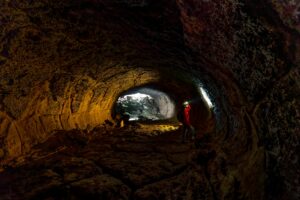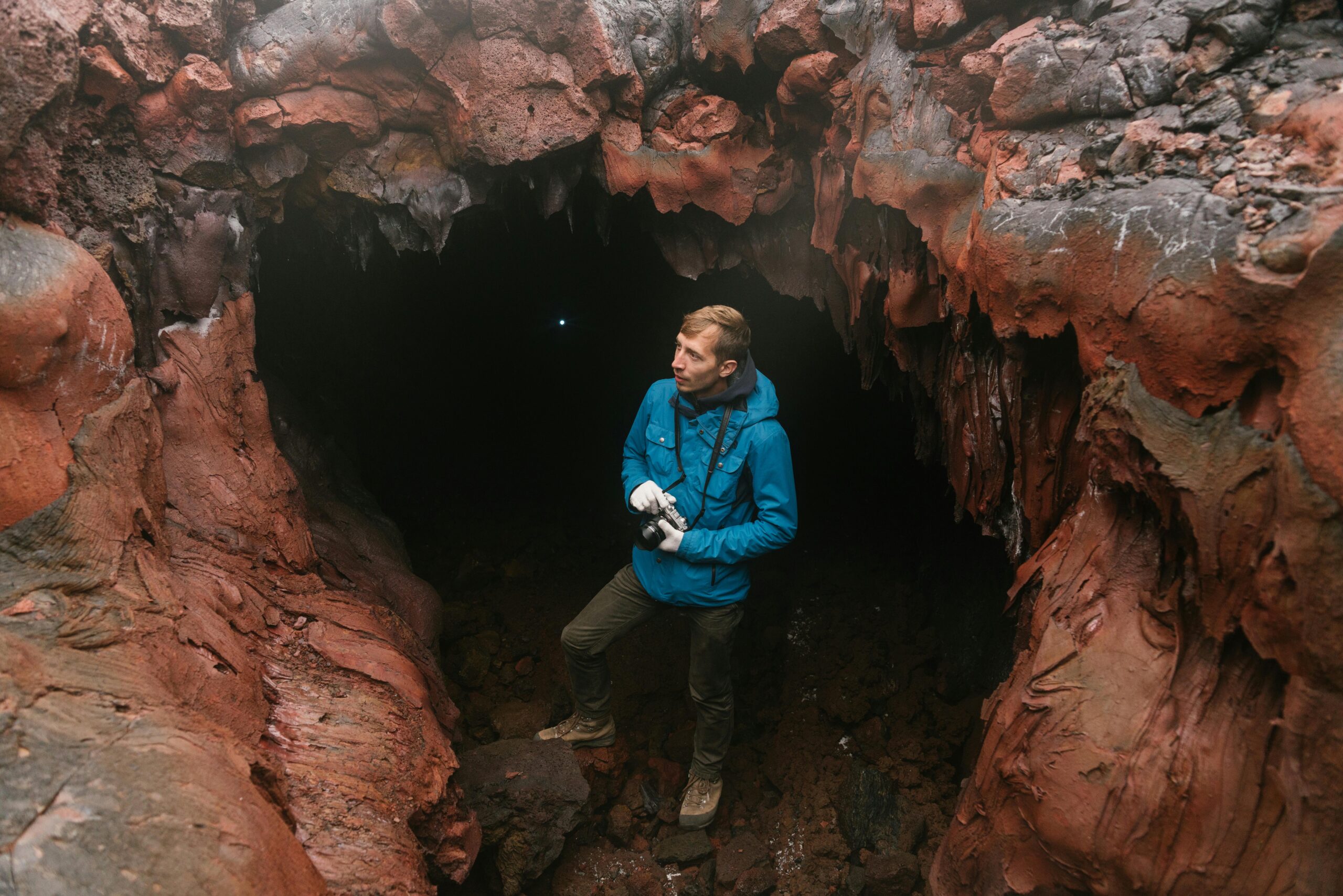What Is Spelunking, and Why Should You Try It?
Spelunking, often called caving, is the thrilling adventure of exploring caves—nature’s hidden labyrinths carved over millennia. It’s a mix of hiking, climbing, and crawling through underground passages, offering a unique blend of physical challenge and awe-inspiring discovery. Imagine squeezing through a narrow tunnel to emerge in a cathedral-like chamber glittering with stalactites. This guide will walk you through everything a beginner needs to dive into spelunking safely and confidently.
My First Spelunking Adventure: A Personal Tale
When I first went spelunking in Tennessee’s Cumberland Caverns, I was equal parts excited and terrified. The damp air, the echo of dripping water, and the utter darkness were overwhelming, but finding a glowing formation of calcite crystals felt like unearthing a secret world. That moment hooked me, and I want to share that spark with you. Whether you’re chasing adventure or curious about nature’s underground art, spelunking has something for everyone.
Why Spelunking Captivates Beginners
Spelunking isn’t just about crawling through caves—it’s about connecting with the earth’s ancient history. Beginners are often drawn to the mystery of untouched spaces and the physical and mental challenge of navigating them. Plus, it’s a fantastic way to bond with friends or meet fellow adventurers.
Essential Gear for Spelunking: What You Need to Start
Getting the right gear is crucial for a safe and enjoyable caving experience. You don’t need to break the bank, but investing in quality equipment can make or break your trip. Below, I’ve outlined the must-haves for any beginner spelunker.
Helmet with Headlamp
A sturdy helmet protects your head from low ceilings and falling rocks, while a headlamp (with at least 200 lumens) lights your way. Always carry extra batteries—darkness is no joke underground! I learned this the hard way when my headlamp dimmed mid-crawl.
Protective Clothing
Caves are cold, damp, and rough. Wear durable, moisture-wicking layers, like synthetic long-sleeve shirts and pants. Knee pads and gloves save your joints and hands from scrapes on rocky surfaces.
Sturdy Boots
Waterproof, high-traction boots are non-negotiable. Caves often have slippery floors or shallow pools, and good grip prevents nasty falls. My first pair of cheap hiking boots failed me on wet limestone—invest in quality.
Backpack and Safety Gear
A small, rugged backpack holds essentials like water, snacks, and a first aid kit. Include a whistle, multi-tool, and emergency blanket for unexpected situations. You’ll thank yourself if you’re stuck waiting for help.
| Gear Item | Purpose | Recommended Brands | Approx. Cost |
|---|---|---|---|
| Helmet with Headlamp | Head protection and illumination | Petzl, Black Diamond | $50–$100 |
| Moisture-Wicking Layers | Comfort in damp, cold conditions | Patagonia, Under Armour | $30–$80 |
| Waterproof Boots | Traction on slippery surfaces | Salomon, Merrell | $80–$150 |
| Knee Pads and Gloves | Protect joints and hands | Black Diamond, Mechanix | $20–$50 |
| Backpack (20–30L) | Carry essentials safely | Osprey, Deuter | $50–$120 |
Where to Go Spelunking: Top Beginner-Friendly Caves
Finding a beginner-friendly cave is key to building confidence. Some caves are guided and well-maintained, perfect for first-timers. Here are a few spots to consider, based on my research and chats with fellow cavers.
Mammoth Cave National Park, Kentucky
Mammoth Cave, the world’s longest known cave system, offers guided tours for beginners. The Frozen Niagara Tour is a gentle 1.25-hour walk through stunning formations, ideal for easing into spelunking.
Carlsbad Caverns, New Mexico
Carlsbad’s Big Room is accessible via a paved trail, making it great for novices. The massive chamber feels like an underground palace, and ranger-led tours add educational flair.
Wind Cave National Park, South Dakota
Wind Cave’s boxwork formations are a must-see. The Natural Entrance Tour is beginner-friendly, with minimal crawling and plenty of wow-factor. I’d love to visit this one next!
Local Caving Clubs
Not near a national park? Join a local caving club through the National Speleological Society (NSS). They often organize beginner trips to smaller caves, complete with experienced guides.
| Cave Location | Difficulty | Tour Length | Highlights |
|---|---|---|---|
| Mammoth Cave, KY | Easy | 1–2 hours | Massive chambers, guided tours |
| Carlsbad Caverns, NM | Easy | 1–3 hours | Big Room, bat flight program |
| Wind Cave, SD | Easy–Moderate | 1–1.5 hours | Unique boxwork formations |
Safety First: How to Spelunk Responsibly

Caving is thrilling but comes with risks—rockfalls, tight spaces, and disorientation are real. My first trip taught me never to underestimate preparation. Here’s how to stay safe.
Never Cave Alone
Always go with a group or guide. If something goes wrong, like a twisted ankle, having others around is a lifesaver. I once got stuck in a narrow passage—my group’s encouragement kept me calm.
Know Your Limits
Start with easy caves and avoid pushing beyond your physical or mental comfort zone. Claustrophobia can sneak up on you, so test your tolerance in small spaces before committing.
Tell Someone Your Plans
Before heading out, share your caving itinerary with a friend or family member, including your expected return time. If you’re delayed, they can alert help.
Respect the Environment
Caves are fragile ecosystems. Don’t touch formations (oils from your hands can damage them), and pack out all trash. I once saw a stalactite dulled by careless touching—it’s heartbreaking.
Pros and Cons of Spelunking for Beginners
Pros:
- Unique adventure unlike anything above ground
- Builds physical strength and mental resilience
- Connects you with nature’s hidden wonders
- Affordable with minimal gear requirements
Cons:
- Physically demanding and potentially claustrophobic
- Requires careful planning to avoid risks
- Limited accessibility in some regions
- Weather can affect cave conditions
Step-by-Step Guide to Your First Spelunking Trip
Ready to explore your first cave? Follow this roadmap to ensure a smooth, exciting experience. I’ve broken it down based on my own trial-and-error journey.
Step 1: Research and Choose a Cave
Pick a beginner-friendly cave with guided tours or join a caving club outing. Check online for reviews and difficulty ratings. Mammoth Cave’s website is a great starting point.
Step 2: Gather Your Gear
Invest in the essentials listed above—helmet, headlamp, boots, and layers. Renting gear from outfitters like REI can save money for your first trip.
Step 3: Train Physically and Mentally
Practice crawling, climbing, and staying calm in tight spaces. I did yoga to boost flexibility and meditated to manage claustrophobia fears before my first cave.
Step 4: Book a Guided Tour or Join a Group
Guided tours are perfect for beginners, offering safety and education. Check park websites or contact the NSS for group trips near you.
Step 5: Prepare for the Day
Pack water, snacks, and a first aid kit. Double-check your headlamp batteries and wear comfortable, durable clothing. Arrive early to avoid rushing.
Step 6: Enjoy and Reflect
Take in the cave’s beauty, ask your guide questions, and snap photos (if allowed). Afterward, journal your experience to plan your next adventure.
Best Tools and Resources for Spelunking
To make your caving journey easier, here are top tools and resources I’ve found invaluable. These range from gear suppliers to educational platforms.
Gear Outfitters
- REI: Offers rentals and high-quality caving gear like Petzl helmets and Black Diamond headlamps. Shop REI
- Backcountry: Great for durable boots and moisture-wicking layers. Visit Backcountry
Educational Resources
- National Speleological Society (NSS): Connects you with local caving clubs and safety courses. Join NSS
- YouTube Channels: Channels like “CaveSim” offer virtual tours and tips for beginners.
Apps for Navigation
- AllTrails: While not cave-specific, it helps locate nearby trails leading to cave entrances.
- Gaia GPS: Useful for mapping remote cave locations.
| Resource | Type | Best For | Cost |
|---|---|---|---|
| REI | Gear Retail/Rental | Helmets, headlamps, boots | Varies |
| NSS | Community/Education | Local groups, safety training | Membership: $45/year |
| AllTrails | App | Finding cave-access trails | Free/Pro: $35.99/year |
People Also Ask (PAA) Section
Here are real questions from Google’s “People Also Ask” section, answered to help you prepare.
What Do You Need for Spelunking?
You need a helmet with a headlamp, moisture-wicking clothing, sturdy boots, knee pads, gloves, and a small backpack with water, snacks, and a first aid kit. Always bring extra batteries and go with a group for safety.
Is Spelunking Dangerous?
Spelunking can be risky due to tight spaces, rockfalls, and disorientation, but with proper gear, training, and a guide, it’s safe for beginners. Never cave alone, and always respect your limits.
How Do I Start Spelunking?
Start by researching beginner-friendly caves, joining a caving club, or booking a guided tour. Invest in essential gear, practice crawling, and prepare physically and mentally for the challenge.
What’s the Difference Between Caving and Spelunking?
Caving and spelunking are often used interchangeably, but spelunking typically refers to recreational cave exploration, while caving may include scientific study. Both involve similar gear and safety practices.
Common Mistakes Beginners Make (And How to Avoid Them)
Even enthusiastic newbies make missteps. Here’s what to watch out for, based on my own blunders and those of friends.
Underestimating Physical Demands
Caving involves crawling, climbing, and squeezing through tight spaces. Train with bodyweight exercises like squats and planks to build stamina. I skipped this and regretted it halfway through my first cave.
Ignoring Weather Conditions
Rain can flood caves or make entrances slippery. Check forecasts and avoid caving during heavy rain. I once got soaked and chilled because I didn’t check the weather.
Skimping on Gear
Cheap headlamps or flimsy shoes can fail you underground. Invest in quality gear or rent from trusted outfitters. My first headlamp flickered out, leaving me panicked.
Not Researching the Cave
Every cave is unique—some have tight crawls, others have vertical drops. Read reviews and talk to guides to ensure the cave matches your skill level.
Comparing Spelunking to Other Outdoor Activities
How does spelunking stack up against hiking or rock climbing? Here’s a quick comparison to help you decide if it’s your vibe.
| Activity | Physical Demand | Environment | Cost | Beginner-Friendly? |
|---|---|---|---|---|
| Spelunking | Moderate–High | Underground, dark | $100–$300 (gear) | Yes, with guides |
| Hiking | Low–Moderate | Outdoors, varied | $50–$150 (gear) | Yes |
| Rock Climbing | High | Outdoors/indoors | $150–$400 (gear) | Moderate |
Why Choose Spelunking? It offers a unique underground adventure that hiking can’t match and is less gear-intensive than rock climbing. Guided tours make it accessible for beginners.
FAQ: Your Spelunking Questions Answered
How Much Does Spelunking Cost?
Basic gear costs $100–$300, but rentals can lower this to $50–$100 per trip. Guided tours range from $20–$100, depending on the cave and location.
Can Kids Go Spelunking?
Yes, many caves offer family-friendly tours for kids as young as 5, like Mammoth Cave’s Discovery Tour. Check age restrictions and ensure kids are comfortable in confined spaces.
What If I’m Claustrophobic?
Start with open, large-chamber caves and practice breathing exercises. Guided tours can help you ease into it. I was nervous at first but found focusing on the beauty helped.
How Do I Find Local Caving Groups?
Visit caves.org to find NSS-affiliated clubs near you. They often host beginner trips and provide training.
Are There Virtual Spelunking Experiences?
Yes, platforms like YouTube and apps like CaveSim offer virtual tours of caves, great for learning or if you’re not ready for the real thing.
Final Thoughts: Your Spelunking Journey Awaits
Spelunking is more than an adventure—it’s a chance to explore the earth’s hidden depths and challenge yourself in ways you never imagined. From the thrill of squeezing through a narrow passage to the awe of discovering glowing formations, caving offers memories that last a lifetime. Start small, gear up, and join a guided tour to kick off your journey. Ready to step into the dark? Your underground adventure awaits.



